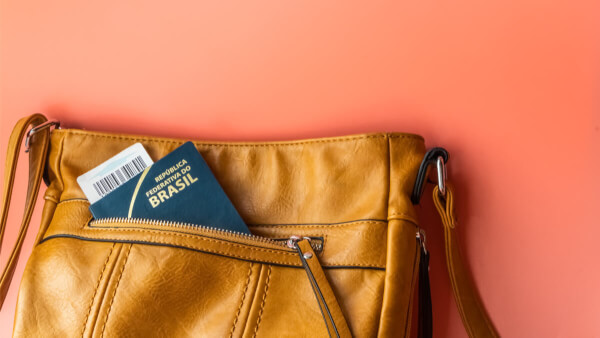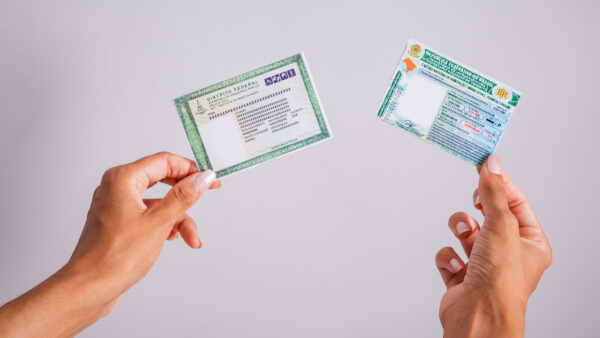Cost of living in Brazil: 2024 guide
Discover what it costs to live in Brazil, from housing and groceries to healthcare and transportation. Compare the cost of living across different cities and ag

Let’s face it, Brazil isn’t known for their world class education system. Ranked #32 in the world for their schools, the South American country has faced a lot of criticism around the level of education offered to its residents.
In fact, a recent study showed that 18% of Brazilians are functionally illiterate - meaning, they can read words and write numbers, but can’t understand full sentences or do simple math.
With statistics like those floating around, it’s easy to get nervous at the thought of moving your family to Brazil, whether it’s for work, to start a business or just for a change of pace. That being said, it’s possible to give your children a quality education in Brazil, and more importantly, the government is making huge strides to improve the education system in the form of the Plano Nacional de Educação (PNE). The PNE details 21 measures the government is taking to ensure Brazilian students are well educated, including increased funding for schools.
Regardless of how you feel about the educational quality, it’s important to understand how the Brazilian school system works in order to make the right choices about where to school your children. If you’re interested in learning more about school structure in the South American country, read on for a detailed overview.
The educational journey in Brazil can start incredibly early on in a child’s life; Pre-school is available for children up to three years old, and includes kindergarten for children four to six. From there, all students must attend primary and lower secondary school (ensino fundamental)
| School Level | Age | Required? |
|---|---|---|
| Nursing/ Preschool | 1-3 | No |
| Kindergarten | 4-6 | No |
| Primary School | 7-11 | Yes |
| Lower Secondary School | 12-14 | Yes |
| Upper Secondary School | 15+ | No |
Brazilian pre-schools are broken into two subcategories: Maternal or Jardim. Two major differences between the two are funding and age. Maternals are typically state-funded and take children ages two to five. Jardims, on the other hand, are sometimes private, and take students who are three to six years old.
The main difference between the school types, however, is their role in education. While Maternal acts more like a daycare, Jardim takes an academic approach and is sometimes seen as a better precursor to primary school.
Choosing between the two rarely comes down to the parent. Typically the child will discuss with the school and they’ll advise which version is right for the student based on their academic and social skills.
Most of these preschools are free of charge, however, it’s possible to find private and international Jardims, especially in bigger cities. To enroll a child in preschool, you’ll need to produce a birth certificate, proof of address and vaccination records. These can be submitted directly to the school in your district.
Primary school, or ensino fundamental, is mandatory for children six to 15. It’s possible for five year olds to enter primary school, as long as they’re due to turn six before the close of the first semester.
Students typically take all of their classes with the same teacher. Subjects include Portuguese, history, geography, math, science and physical education. Older primary school students may also have additional teacher for foreign languages classes, the most common of which are English and Spanish.
In both public and private schools, it’s not uncommon for students of various ages to be in the same class. This is because children sometimes don’t begin their schooling at the correct age, and because it’s fairly common for students to be held back after taking and failing to pass their year-end exams. As such, the age range in a single class can be rather large.
Grading in Brazil is based on a simple letter system, as follows:
| Grade | Scale | Description |
|---|---|---|
| A | 90-100 | Excelente |
| B | 70-89.99 | Bom (good) |
| C | 50-69.99 | Acceptable (average) |
| D | 30-49.99 | Suficiente |
| F | 0-29.99 | Deficiente (Fail) |
Registering children for school involves submitting documents directly to the most relevant school in your area. Those documents include:
Secondary school, or Ensino Médio, in Brazil is made up of students ages 15-18. At this stage, philosophy and sociology are added onto curriculum on top of the existing core subjects. Students at the secondary school level are trained to be prepared for entry to a public university, and those courses are sometimes supplemented by specific college preparatory classes.
Students attending secondary school are graded on the same scale as those attending primary school. Secondary school isn’t compulsory, and it’s not uncommon for children to discontinue their education after age 14.
Due to serious overcrowding in both public and privates schools in Brazil, most students don’t attend school for an entire day in order to make room for “sessions.” The hours of those sessions vary, though a typical schedule would be first session from 7AM-12PM, second session from 12PM-5PM, and third session from 5PM-10PM. Students only attend one session per day.
Some schools may only offer morning and afternoon sessions, though many offer all three.
The school year in Brazil usually starts at the beginning of February, but is shifted in relation to when Carnival falls on any given year. Otherwise, students are typically in school for most of the year, with the exception of July (which is a holiday month), and a government mandated school holiday, Recesso Escolar, which happens at the end of the year.
All public schools in Brazil can be attended for no cost. That being said, nearly all expats living in the South American country choose to enroll their children in private schools instead. Private schools are typically significantly better than state schools, however, they’re also more expensive.
Most expat families choose to send their children to international schools, which aren’t only more reputable than regular private schools, but offer foreign curriculums (like American or British) that allow students to easily attend university in those countries. International schools typically cost between BRL 3000-9000 per month. Private schools, on the other hand, can cost less than BRL 1000 monthly. Parents will also be required to pay for uniforms, the price of which recently went up when Brazil introduced micro-chipped RFID uniform shirts to help fight truancy.
Those costs add up, so it’s important to save money on transfers when you’re funding your child’s education from your bank account back home. In order to avoid serious international transfer fees, use Wise to get the real exchange rate and cut out expensive international bank transfer fees.
In summary, the Brazilian education system can seem a bit lackluster to expats new to the country, despite its many similarities to foreign systems. It’s possible for students to get a quality education, however, and the quality of the public school systems in the country is constantly on the rise.
*Please see terms of use and product availability for your region or visit Wise fees and pricing for the most up to date pricing and fee information.
This publication is provided for general information purposes and does not constitute legal, tax or other professional advice from Wise Payments Limited or its subsidiaries and its affiliates, and it is not intended as a substitute for obtaining advice from a financial advisor or any other professional.
We make no representations, warranties or guarantees, whether expressed or implied, that the content in the publication is accurate, complete or up to date.

Discover what it costs to live in Brazil, from housing and groceries to healthcare and transportation. Compare the cost of living across different cities and ag

Discover the different ways to acquire Brazilian citizenship, including by descent, marriage, naturalization, and residency. Uncover the benefits and responsibi

Find everything you need to know about moving to Brazil in this handy guide.

Still using a bank or a broker to send money internationally? There’s now a smarter, cheaper and easier way. If you send or receive money internationally,...

If you’re one of the many people considering a new life as an expat in Brazil, you’ll need a CPF number.

Brazil is the largest country in South America, but most of the nation’s population lives in cities. In fact, about 82 of every 100 Brazilians reside in urban...